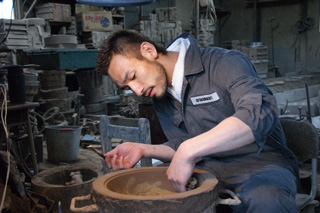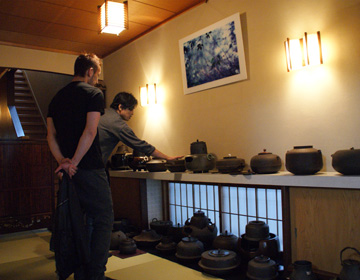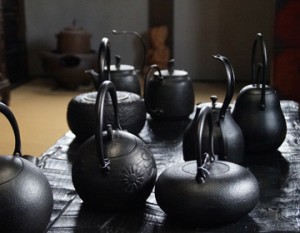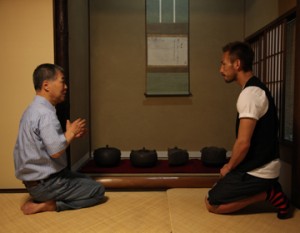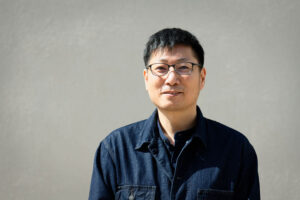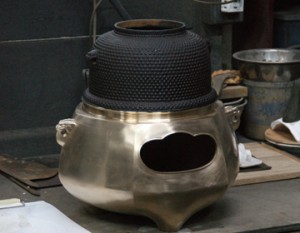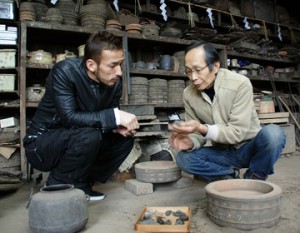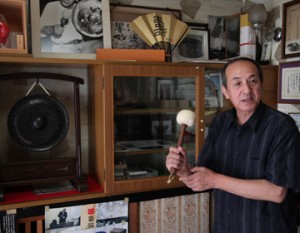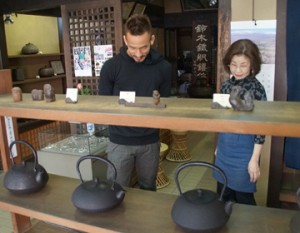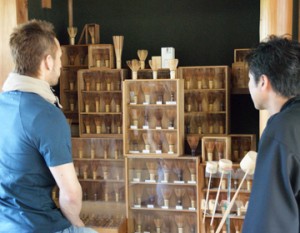Pursuing the tea kettle making
Kashihara-shi Nara is where the very first castle of Japan, Fujiwara kyo was built. Imai-city in Kashihara was a self-governed city which had developed in the middle ages being referred to as ”Sakai of the sea, Imai of the land”. You can still see signs of Edo period. Shozo Kawabe 3rd generation of tea kettle creators resides in the city with such a background.
Shozo Kawabe learned his trade from his father and later studied under tea ceremony researcher and Chuo University professor Kazue Hyounenshi, erudite Kenzo Koga and continued his research on tea kettles.
His works can be described with the word, ”hannari”, a word used in Kyoto to mean refined yet gracefully beautiful. His pieces are not lavish, but have a quiet gentle touch.
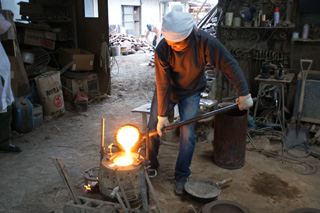
Making kettles delicate, hot and heavy
Tea cauldrons are made by casting. Nakata experienced the process of pouring the melted metal into a mold to create the body. The red melted metal is obviously hot, but what is more unbearable than the heat is its weight.
When you think about it, there is enough metal to create a kettle. It requires much more strength than expected. After this, Nakata learned how to draw designs on the surface of the kettle, which in turn involved extremely delicate work.
Even before 2004 when he succeeded his father as the 3rd generation, Shozo Kawabe was already being used at various places such as the” Oochamori” at Seidaiji temple, and ”Joju Gama” for Akishino Temple and Todaiji Hokurikuin Houjuin. Currently, his daughter Naoko is busy learning the trade from her father.
It will be exciting to see future pieces created by Kawabe.
